
The Latécoère 28 was a successful French long-haul mail plane and passenger airliner of the 1930s. It was the main-stay of Air France's predecessor, Aéropostale in its efforts to establish intercontinental air mail services and support French colonialism and French cultural influence between the wars.

The Blériot 127 was a French bomber aircraft of the 1920s and 1930s, developed from the Blériot 117 escort fighter. It was a large monoplane of conventional configuration that featured open gunner's positions in its nose and at the rear of its two underwing engine nacelles. The wing airfoil was of sufficient thickness that these latter positions could be accessed from the fuselage in flight.

The CAMS 55 was a reconnaissance flying boat built in France in the late 1920s which equipped the French Navy throughout the 1930s.

The Latécoère 300 series of aircraft were a group of civil and military flying boats. They were manufactured by French aircraft manufacturer Latécoère in the 1930s. A single Latécoère 300 was built; it was flown for the first time in 1931 and sank the same year. It was rebuilt and flown again in 1932, being named Croix du Sud.

The Lioré et Olivier LéO H-13 was a French biplane two-engine flying boat of the 1920s, built in passenger and military variants.
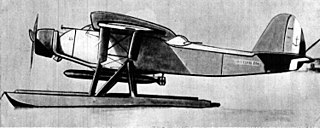
The Latécoère 290 was a torpedo bomber floatplane produced in France during the 1930s. Designed by Latécoère in response to an Aéronavale specification for such an aircraft, the 290 was based on its successful Laté 28.3 mail plane. It was a conventional high-wing, strut-braced monoplane that carried a single torpedo externally under the fuselage.
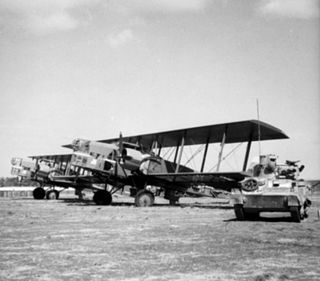
The Lioré et Olivier LeO 25 was a bomber aircraft produced in France in the late 1920s.
The Latécoère 440 was a single-engined, high-winged float plane built as a coastal defence aircraft for the French Navy in the early 1930s. Two were produced to contract but did not impress in tests and the Navy chose instead the Latécoère 290.

The CAMS 31 was a 1920s French single-seat fighter biplane flying-boat designed and built by Chantiers Aéro-Maritimes de la Seine (CAMS).
The Bréguet 790 Nautilus was a prototype French three-seat coastal patrol flying-boat designed and built by Bréguet Aviation to meet a requirement from the French navy.
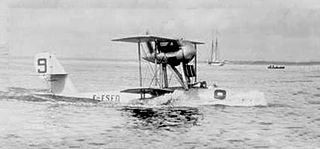
The CAMS 38 was a French single-seat racing flying-boat designed by Rafaele Conflenti and built by Chantiers Aéro-Maritimes de la Seine (CAMS) for the 1923 Schneider Trophy race. The CAMS 38 was withdrawn from the race during the second lap.

The Hispano Suiza E-30, later renamed Hispano E-30, was designed in Spain in 1930 as a multi-purpose intermediate trainer. It was a single engine, parasol wing monoplane. About 25 served with the Spanish armed forces until 1945.
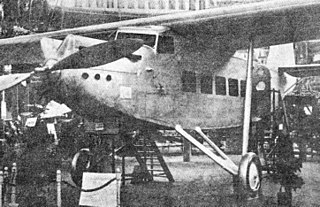
The Dewoitine D.30 was a ten-seat cantilever monoplane built in France in 1930. The D.30 was a single-engine aircraft but the second was completed as a trimotor and redesignated D.31.

The CAMS 36 was a 1920s French flying boat designed and built by Chantiers Aéro-Maritimes de la Seine. It was originally conceived as a single-seat fighter but evolved as a racer to compete in the 1922 Schneider Trophy race. Lack of funds in 1922 and an accident in 1923 meant the two aircraft built failed to participate in a Schneider race.
The Romano R.5 was a French reconnaissance flying boat built in 1932. It had a parasol wing, a single engine and hull stabilizing sponsons. Only one was built.

The Lioré et Olivier H-23-2 was an amphibious maritime reconnaissance flying boat, built in France in 1932. Three were produced for the Venezuelan Army Air Service.

The four-engined Lioré et Olivier LeO H-27 was one of three French flying boats competing to carry mail over Air France's South Atlantic routes. Flying later than its competitors, it was not selected and only one was built.
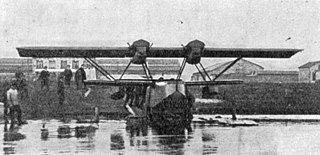
The Hanriot H.38 was a French twin-engined sesquiplane flying boat built in the mid-1920s. Though the sole prototype was fitted with two defensive machine gun posts. the H.38 was described at the time as a utility aircraft..

The CAMS 54 was a strengthened and more powerful version of the French CAMS 51 civil transport and naval reconnaissance flying boat, developed for transatlantic flights. It is sometimes referred to as the 54 GR.
The Blériot 73 was a large First World War French heavy night bomber designed and built by Blériot to the BN3 specification. Only a single prototype was built, which crashed on landing from its first flight, killing the pilot. The Blériot 74, Blériot 75 and Blériot 76, respectively, a heavy bomber / airliner, airliner and heavy bomber, directly evolved mfrom the Blériot 71 / Blériot 73 bombers.
















